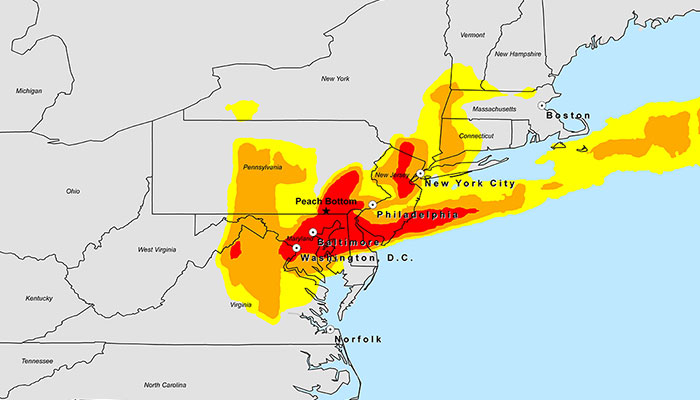U.S. Nuclear Regulators Greatly Underestimate Potential for Nuclear Disaster
http://wws.princeton.edu/news-and-events/news/item/us-nuclear-regulators-greatly-underestimate-potential-nuclear-disaster
[font face=Serif][font size=5]U.S. Nuclear Regulators Greatly Underestimate Potential for Nuclear Disaster[/font]
May 25, 2017
[font size=3]The U.S. Nuclear Regulatory Commission (NRC) relied on faulty analysis to justify its refusal to adopt a critical measure for protecting Americans from the occurrence of a catastrophic nuclear-waste fire at any one of dozens of reactor sites around the country, according to an article in the May 26 issue of Science magazine. Fallout from such a fire could be considerably larger than the radioactive emissions from the 2011 Fukushima accident in Japan.
Published by researchers from Princeton University and the Union of Concerned Scientists, the article argues that NRC inaction leaves the public at high risk from fires in spent-nuclear-fuel cooling pools at reactor sites. The pools — water-filled basins that store and cool used radioactive fuel rods — are so densely packed with nuclear waste that a fire could release enough radioactive material to contaminate an area twice the size of New Jersey. On average, radioactivity from such an accident could force approximately 8 million people to relocate and result in $2 trillion in damages.

This image captures the spread of radioactivity from a hypothetical fire in a high-density spent-fuel pool at the Peach Bottom Nuclear Power Plant in Pennsylvania. Based on the guidance from the U.S. Environmental Protection Agency and the experience from the Chernobyl and Fukushima accidents, populations in the red and orange areas would have to be relocated for many years, and many in the yellow area would relocate voluntarily. In this scenario, which is based on real weather patterns that occurred in July 2015, four major cities would be contaminated (New York City, Philadelphia, Baltimore and Washington, D.C.), resulting in the displacement of millions of people. (Photo courtesy of Michael Schoeppner, Princeton University, Program on Science and Global Security).
These catastrophic consequences, which could be triggered by a large earthquake or a terrorist attack, could be largely avoided by regulatory measures that the NRC refuses to implement. Using a biased regulatory analysis, the agency excluded the possibility of an act of terrorism as well as the potential for damage from a fire beyond 50 miles of a plant. Failing to account for these and other factors led the NRC to significantly underestimate the destruction such a disaster could cause.
…[/font][/font]
